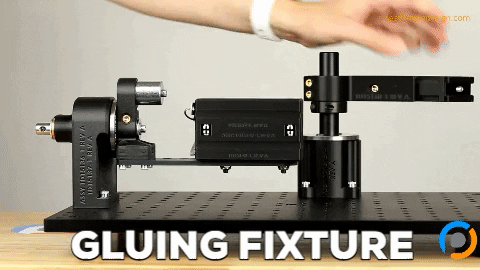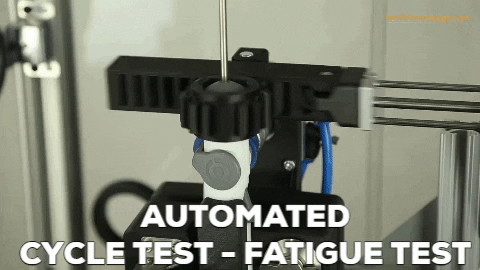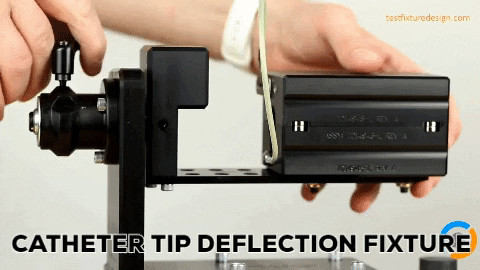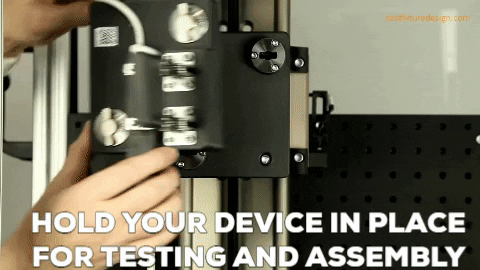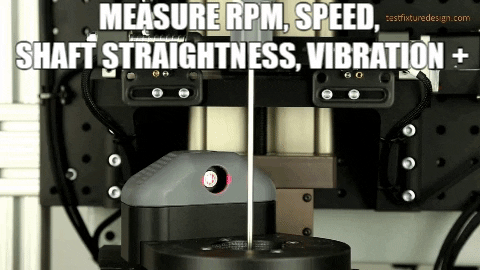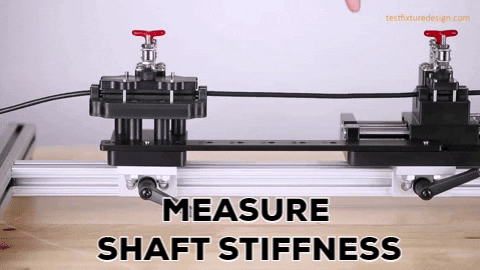S4E28 Kevin Distelhurst | Semiconductors – What They Are & How They’re Manufactured

Who is Kevin Distelhurst?
Kevin Distelhurst holds both a bachelor’s and a master’s degree in electrical engineering and has spent his career to date in the world of semiconductor manufacturing where he develops techniques and tools, leads projects, and trains and mentors new engineers and technicians. Join our conversation to learn more about what semiconductors are, how they are manufactured, and what some of the sources of defects are.
EXPAND TO VIEW EPISODE TRANSCRIPTION
SUMMARY KEYWORDS
semiconductor, device, build, engineer, chip, electrons, tool, people, design, lab, smaller, semiconductor manufacturing, analysis, work, manufacturing, cleanroom, talking, image, process, field
SPEAKERS
Kevin Distelhurst, Aaron Moncur
Aaron Moncur 00:04
This fall, we’re launching a brand new platform of tools, education and community to dramatically accelerate the speed of engineering. This platform is specifically built for teams to develop physical goods, such as machines, devices, and consumer products. If you are a mechanical engineer, r&d engineer, process development engineer, mechanical designer, product development engineer, or similar, we think you’ll love what we’re working on. More info to come soon, so keep your eyes and ears open for the full launch of the website. In the meantime, send us a note at podcast at Team pipeline.us. And let us know what features or functionalities you would find most useful in this platform.
Kevin Distelhurst 01:00
Semiconductor manufacturing is probably one of the most advanced things that human humans can do right now. That’s why it’s great being an engineer.
Aaron Moncur 01:22
Hello, and welcome to the being an engineer Podcast. Today we’re speaking with Kevin Distelhurst who holds both a bachelor’s and a master’s degree in electrical engineering. Kevin has spent his career to date in the world of semiconductor manufacturing, where he develops techniques and tools, leads projects and trains and mentors, new engineers and technicians. Kevin, thank you so much for being with us today.
Kevin Distelhurst 01:47
Thank you glad to be here.
Aaron Moncur 01:48
Well, what made you decide to become an engineer?
Kevin Distelhurst 01:52
Probably started from a very young age when I stirred my parents with how everything worked, basically, like, how does that work? How does this work? And I know my parents didn’t always have the answers. So I would always be digging in and trying to figure out how things work to the point where I would start taking things apart. Alongside with that, while growing up. I also enjoyed a lot of sci fi and related shows and books. So like Star Trek, I’m sure a lot of people say that. But sci fi books in general love them, then love them now. And they always inspire me to kind of push the envelope and look for something different. And then I couldn’t really see myself as I started thinking through high school. What I wanted to do, I couldn’t really see myself anywhere else. But being in a science related field. So for a little bit, it was like, Can I be a physicist of some sort, but then it was really engineering that stuck with me because it was utilizing science to make something real. And yeah, yeah, you know what I mean? Very cool. And I guess eventually, it was a decision of what kind of engineering I wanted to do. So was originally mechanical and then eventually electrical.
Aaron Moncur 03:11
The dark path of electrical you get some of it?
Kevin Distelhurst 03:13
Yeah, imaginary numbers and all that scary things.
Aaron Moncur 03:16
People, but I wish I knew electrical. I really truly do. I’m terrible at electrical. But please go on.
Kevin Distelhurst 03:23
Yeah, so it was basically that and then getting into college, just kind of finding my path through there figuring out what I liked in electrical. And eventually I got to the point where, through some internships and taking classes, I’m like, semiconductors seemed interesting. And despite some people saying, oh, you know, the semiconductor industry, it’s very volatile, you could be losing your job one day and finding another job. And other I was like, I’m gonna do it. And I decided to take some grad courses, because that was the only level I could take some of the semiconductor courses was at the ground level. So went that far down that rabbit hole, and here I am today.
Aaron Moncur 04:01
Nice. So speaking of semiconductor, that is, what you’re doing in your career. And I think that’s what you’ve been doing your entire career ever since graduation. Is that right?
Kevin Distelhurst 04:11
Correct. Yeah. Same. So I’m failure analysis engineer specifically. So basically, I’ve been doing that for about 10 years now since I graduated. wasn’t necessarily the first thing I wanted to do when it coming out of school, but I fell into it. And I’ve been doing it ever since.
Aaron Moncur 04:29
Awesome. All right. Well, for those of us who are not intimately familiar with the industry that is semiconductor, can you tell us a little bit about what that even is just real basic. What what is a semiconductor?
Kevin Distelhurst 04:44
Yeah, so semiconductor, you’ve probably heard it. It’s in some chemistry or physics class. When talking about a periodic table of elements, it’s a specific group of elements. Now what makes those important is when you when you start manufacturing and utilizing some of that unique properties, you’re able to build devices basically on a hunk of silicon, for example, that allow you to control the movement of electrons in specific ways at many different speeds. So in some cases, at least in, in circles, I talk semiconductors as it doesn’t necessarily mean the material side of it, it’s talking more about that device that is built in that semiconductor material. So when I say semiconductor, it’s this device that is built on a silicon substrate for, for example.
Aaron Moncur 05:38
And when you say device, what does that mean? Because we’re talking about something very small, right?
Kevin Distelhurst 05:43
Yes, extremely. So device as an electrical circuit, so think of a switch, you’re like a light switch. That is a very rudimentary way of looking at what I mean by a device, the person is flipping the switch allowing current flow on or off. Now you shrink that a lot, and you’re using electricity to basically change that on an off, and that’s your device, that device that basically makes our entire technological technology world is that I hope that kind of explained.
Aaron Moncur 06:24
Yeah. And there are what, like millions or even billions of these little devices on a silicon chip.
Kevin Distelhurst 06:33
Yeah, trillions. Probably, probably one term that maybe a lot of people have heard to media, at least is Moore’s law, which is basically this trend in the industry where how much you can fit onto the same size chip, basically doubles every two years. And then more recently, you’ve probably heard about that kind of wall that is starting to approach and has been broken through a few times. But you can only get so small, because you’re at the point now, they, they start measuring these nodes by nanometers. And you’re getting to the node where you’re like 235 nanometer, where basically you’re talking about handfuls of atoms, like 612 20. So like, imagine not getting one atom in place correctly. And that’s how small you’re getting.
Aaron Moncur 07:35
That is incredible. And what material is typically used for these devices, is it is it copper always are something else.
Kevin Distelhurst 07:44
Yeah, so the actual switching circuit is usually silicone, which is the semiconductor itself, and then that silicone. Believe it or not, you want a certain controlled amount of impurities in that soak. And that creates something called a P or an end junction. And those impurities are basically adding more electrons or subtracting electrons for that material. And then you start getting into some pretty deep physics about how those electrons are actually flowing when you apply certain electric fields. But to answer your question, silicone is at least the device level. But then copper, like you mentioned, is a lot of the metal that you see connecting all those devices together. I guess this is a good point to kind of distinguish the two, I guess parts of a semiconductor chip, you got your front end of the line, which is where your silicone your device sits. And then you have the back end of the line where that is basically taking all your devices and wiring them together with metal that eventually bringing all that metal out into a more macro view, where you can then put that semiconductor chip onto a circuit board that you might see if you’ve ever opened any type of electronic before that kind of green looking thing. At least that seems to be common.
Aaron Moncur 09:06
Yeah, yeah. That’s amazing. I mean, getting down into the number of atoms. So small, which which brings me to my next question, what are what are some of the most challenging aspects of making semiconductors? I have to imagine one of them is just getting all the atoms in the right place.
Kevin Distelhurst 09:26
Yeah, so I guess one of the important things to keep in mind with semiconductor manufacturing, I’m sure a lot of different manufacturing has certain type of like room quality control. But basically, this whole process is being done in something called a cleanroom. If you can imagine the human hair is microns in dimension, and these devices you’re talking about are in nanometers. So you lay a human hair across this chip in your fitting a lot of device There’s a metal in that underneath that hair. So obviously, you don’t want hair going down onto onto this wafer. They’re built in wafers while you’re processing because they basically would mess up your process. But hair is actually the easy thing to keep out, because it’s so large, we’re talking nanometer size features. So you want to keep very, very small, foreign material out of your process. So you’re talking to these rooms that need like, parts per billion parts per million worth of just no particles whatsoever flying through the air. So that I guess is the main thing to keep in mind when it comes to what makes semiconductor manufacturing unique. A lot of what you see also in manufacturing is photo lithography. So you’re trying to build all these layers. And a lot of these layers are built and defined by using white basically. So let’s say you want to make a line of metal go in one direction, you would take that line and etch it on a mask of some sort. And that mask would either block or allow light through on your surface that you’re building. And as that lights penetrate, going through the mask, wherever that line is built on that mask is what gets developed on your sample. So there’s these resists and polymers of all kind that, when exposed to certain types of light, will change in characteristics so that when you put them through certain types of chemistries, they’ll either get removed, wherever there’s light, or anything that wasn’t exposed to light gets removed. So that’s another main part of semiconductor, I could probably go on a lot longer to
Aaron Moncur 11:56
Oh, that’s so cool. How do you even make the masks? I mean, I get how the light is used to create the the, the device, the layer underneath it. But someone has to make that mask first, right? What what process is used to make this mask with with nanometer wide features?
Kevin Distelhurst 12:17
Yeah, that’s a good question. And it’s honestly not one I’ve ever asked myself. So I’m not sure there’s, there’s a lot of aspects to semiconductor manufacturing that, yeah, you go down a lot of different rabbit holes and learn a lot of things. It’s quite a broad field that spans basically the entire globe.
Aaron Moncur 12:36
What are some of the biggest sources of variability or even defects in semiconductor manufacturing?
Kevin Distelhurst 12:43
Yeah, so defects are my world, basically. So failure analysis engineer, so when a certain ship doesn’t work, I am tasked to figure out why it doesn’t work. So some of the things that I’ve see, first off, like I was saying, you’re in a cleanroom. But even that is not perfect. So if foreign material lands on your surface, and then all of a sudden you’re building around it, that either blocking or somehow interfering with the chemistry is involved, that can cause some type of either nets not connecting net says in different metal traces that connect all the devices not connecting, that basically prevents a certain part of your chip from working correctly, where it could bridge some of those metal structure together, causing basically signals to electric signals from travel elsewhere on the chip that they’re not supposed to. Um, so that’s one type of defect or variability I see. Let’s see what others there are photo lithography, photo lithography, sick base defects. So this is more in line with you build this mask, but exactly what you put on it might not develop exactly how you think it will develop. So those are usually things that you might see in the beginning, when a product is first coming out. So knowing exactly how to print things, or how to build it onto that mask before it gets printed is is an important aspect and can cause the effects that I see. Um, you’re talking about surface quality. So you start depositing metal or depositing oxides of some sort that surfaces imperfect, you create defects, if you’re trying to remove so it’s not just adding things to this wafer. You’re also adding and subtracting, adding, subtracting, so that you can define all these different features and structures on the device. And all this stuff you can’t actually see with the naked eye right or I don’t know, probably under a high powered microscope you could but you Are you kind of just theorizing what you think might have gone wrong? And then developing some sort of test that helps you determine whether or not that’s the issue? No, no, we are seeing the defect. And oh, see is dependent on what the defect is. Okay? There’s a lot of different levels. Now, let’s say a customer returns apart and says, This is bad, why? It could be as obvious as I look at it and be like, yeah, you put five volts on it, when you were supposed to put one volt on it, it’s a smoking mess, you let the magic smoke out as some people say. So that’s something that maybe you could just kind of eyeball and look at. Okay, others, you start removing some of the matte metal. So a lot of what we do in the lab is removing metals after we kind of have an idea of where to look, which is a whole nother aspect of filler analysis is where to look. But to your question about how you image as you start removing these layers, you start using optical microscopes. And those kind of give you an idea of what you’re looking at, when comparing to a layout and saying, okay, is where I’m looking different than what should have been printed, or not. But even optics start failing pretty quickly. So the larger features you can see under optics, but then as you get further and further down, you start getting to those really small devices, you start needing something called a scanning electron microscope, which optics, there’s a theoretical limit to how well you can resolve a feature in there, the scanning electron microscope brings you even further, where an electron is able to resolve even smaller and smaller dimensions. So then that’s where you start getting into the nanometer range. And then a lot of times, there’s another technique on top of that, or further than that, called T m, which is transmission electron microscope, which a lot of the smallest of features are imaged in that technique. And that if you look online, you could probably see cases where people are able to image individual atoms in a T Em, so that is the last basic realm of where you’re trying to image. So yeah, you’re imaging somewhere in between anywhere, anytime, that any of that
Aaron Moncur 17:25
that’s incredible down to an atom, I need to go look up some pictures online, just to see what that looks like. It sounds fascinating. Yeah, I’ve never used sem or T em, is that is that like a real time imaging tool? Or do you have to, I don’t know, run the process and wait for 30 minutes before you get your image back.
Kevin Distelhurst 17:46
For an SEM, for instance, there’s different scanning modes. So it’s scanning as in your beam, your electron at one, I’ll say pixel for a designated amount of time, then you Bucha the next pixel, while for their a little bit and mild spelling, you’re shooting electrons off your sample, and you’re collecting those and then those give you the information of what is at that pixel when your electron is beaming on that. So you could it’s all about signal to noise ratio. So if you dwell really quickly and get a lot of signal back, then you can get an image very, very quickly. If, for whatever reason, you have a lot of noise, or you’re usually that’s when you’re trying to really magnify and then you might want to dwell even longer. So then maybe that’s like a one or two minute scan. But yeah, you’re not you’re not waiting 30 minutes, at least not what I’ve experienced.
Aaron Moncur 18:41
Okay, all right. How have semiconductors changed over the years? Some obviously, they’ve gotten smaller. Are there any other fundamental changes that that have occurred?
Kevin Distelhurst 18:53
Yeah, so as alluded to there was Moore’s law, which is basically it gets smaller and smaller and smaller. And some people have argued that it would have Moore’s law would have been basically dead at a certain nodes. But certain companies keep finding ways to push that even further. But even then, there’s really no way to get smaller than an atom, at least not in my rudimentary physics knowledge. But um, so you’ve probably start seeing other things going on in the industry. So one part of that is how to bring all these different chips together. What I mean by different chips is okay, you got your processor, but there are a lot of other things other chips semiconductors out there, and they have different purposes and uses. So think about your phone, for instance, that has wireless, you got Bluetooth, mobile, Wi Fi, you have all these different wireless communications. Those require a certain A set of semiconductor devices that aren’t necessarily on the processor in your chip. So you open up a phone, you’ll see, there’s a lot of different little components and spreading all those components out mean that you’re losing some performance. So one shift is how to bring all those components closer and closer. Ideally, it’d be nice to put them all on a single chip. But a lot of those devices vary so much that you can’t manufacture them on the same chip. And even if you could, you’d be making that chip so complex, that the chances that something gets introduced in the process and causes that whole chip to fail, starts increasing pretty heavily. So there’s this whole idea of how to bring all those together. There’s a lot of different talk about how to make analog chips, better, faster, how to incorporate them. And when you start talking about talking between different chips, there’s even the talk about how to start using light instead of electrons. Because light has certain benefits over electrons, like lack of interference, if you have a proper light waveguide. So yeah, there’s Moore’s law. But there’s also a lot more in electric electronics field on how to better increase your performance. And being that we’re getting to that point, where Moore’s law just is running out of steam. I think we’re in this kind of big open field all of a sudden, where, Okay, what’s next? Anything could pop up really. And at least from my level, I don’t really know what would pop up. But it’s an interesting time for sure.
Aaron Moncur 21:35
Yeah, it will, humans are pretty good at it solving problems over time. So I’m sure we’ll come up with something, it’ll be super interesting to see kind of what the next generation is for, I guess, maybe it’s not called semiconductor anymore, whatever that new generation is. Yeah. What What’s the process for designing a semiconductor chip? I mean, what what are some of the tools that are used during the design process?
Kevin Distelhurst 22:01
Yeah, so I’m, I’m not much in the design field. So how specific be but an interesting thing to keep in mind? At least it’s something that’s in my mind a lot in my line of work is, who owns what in the in the process? And is it our customer? Who owns a certain part of the design? Or is it us. So one side of that coin is, we’re a manufacturer, we will take your design, build it for you, and then give you that way for that final product and say, That’s yours. And they could come back to us and say, We think something you built on there is not working correctly, we want you to fix it, or it could have been something in their design. So it’s like, sorry, there’s nothing we can do. We built the way you said, and it is what it is. But then there’s the other side of the coin, where there are companies that own the design, they build all their devices in simulation, and CAD software, so on and so forth. They build these IP these circuits, these latches, transistors, power amplifiers, low noise amplifiers, they build all these different components, which are devised all these little devices. So that company designs it, then they build it, and then they look at it, they test it, they then have to take that way for turn it into something that then can be put into a phone. So then they own that all aspects. So that’s where then they have a lot of different designs. And then when you’re talking about how to design it, yeah, it’s how to put all these devices together. And there’s certain benefits to putting them together in one way or another. At least from the manufacturing point of view, we’re providing design guidelines that basically say you can’t put this device this close, or you can’t make this shape this way. There’s like huge manual of all these different ways of what you can and cannot do when you want us to build something. And then on top of that, once you design it, it’s like, okay, you built all the structures, can we actually use this lithography to print that on the device on the wafer? And if we can’t, then there’s even more design checks. And then once it’s built into that wafer, it’s like, okay, how well will that actually bond and sit on your phone, your computer board in your, in your car, a satellite flying over Earth? So there’s even more design guidelines there. So there’s all these different steps to design now. That’s difficult, just it’s difficult to focus on all of them. So there’s a lot of people who focus on a lot of different aspects of it.
Aaron Moncur 24:52
It sounds like it’s a very collaborative process between the design team and the manufacturing team. Is that accurate?
Kevin Distelhurst 24:59
Yes, there definitely is.
Aaron Moncur 25:01
Yeah, that’s how it should be with mechanical as well. But oftentimes we find that we can kind of get away with not I shouldn’t say that way. Oftentimes mechanical teams do don’t involve the manufacturing early enough, which leads to problems, but sometimes not not such huge problems. But I imagine with semiconductors, you kind of have to have a deeper level of integration between the two teams with with everything going on.
Kevin Distelhurst 25:27
Yes. And the better that is, the more you understand the design and how it will be built, the better off you are because building the mask, building these wafers, building these devices, and testing them, is not a quick process. You’re talking months. So you can submit your design a few months later, you’ll get something and it’s like, does it work or not? And if it doesn’t, that’s time and a lot of money. Like for instance, a mask, if you need to re spin a mask, it is expensive. So it’s you want to make sure everything’s hitting on all calibers.
Aaron Moncur 26:09
What about the equipment? What does that look like? I mean, it is it just like filling up an entire factory floor? cleanroom factory floor, how big is it?
Kevin Distelhurst 26:18
Yeah, so it’s, at least the fabs I’ve walked through, it’s tough to see exactly how big these are because of the cleanroom, they’re in, you got a lot of pipes going into them and with all types of dangerous chemicals. So some of that stuff is behind water walls, and out of reach you especially if it’s a dangerous chemical, you don’t want it anywhere near your operators on on the floor. But I’ve seen tools go through pretty big walls just barely fitting, so you’re talking you cars more it’s of size. Wow, these tools are handling and moving wafers around. There’s multiple chambers, a lot of those chambers are going under vacuum. To avoid air basically, from interfering with your process. You’re talking plasmas. So the equipment behind being to generating those vacuum and those chambers and moving between those chambers and generating plasmas and heat and chemical and introducing chemicals and precursors. You know it it just makes massive footprints.
Aaron Moncur 27:27
Wow, that that really gives me an appreciation for how complicated the process is. There’s just sounds like so much that could go wrong.
Kevin Distelhurst 27:35
Yeah, definitely. It’s, um, sometimes I just say that semiconductor manufacturing is probably one of the most advanced things that human humans can do right now. Yeah, that sounds like it. Humans are great, great people, we find a lot of interesting ways to do on different things. So that’s why it’s great being an engineer.
Aaron Moncur 27:54
Absolutely. Well, I’m going to take a quick break and share with the listeners that team pipeline that US is where you can learn more about how we help medical device and other product engineering or manufacturing teams, develop turnkey equipment, custom fixtures and automated machines to characterize, inspect, assemble, manufacture and perform verification testing on your devices. We’re speaking with Kevin Distelhurst today. So Kevin, what what is the path to becoming an engineer in, in semiconductor? How does? How does an engineer get started? If that’s where he or she wants to end up?
Kevin Distelhurst 28:30
Yeah, so as you could probably see, from what I’ve said, so far, there are probably a lot there are a lot of paths into the semiconductor field. So it really depends on what type of engineer what type of person you want to be in the semiconductor field. So at least my path was, I was interested in the physics behind semiconductors, what actually makes a device. So I went to school for an electrical engineer. Then, while I was there, as like, there’s grad courses that talk about the physics behind how a device a transistor, for instance, a silicon transistor work. So I then took courses on that, knowing that that was the field I wanted to be in. And then came career fairs. I specifically target some of the fabs the manufacturing companies that were making chips. And eventually I didn’t necessarily fall where I wanted to in the silicon semiconductor field, but I fell in fell into failure analysis, and it’s been a great field there. Now, that’s just one part of semiconductor failure analysis. There’s obviously a whole quality and reliability side of it, where maybe data analytics or working with customers or whole different other field, there is material analysis. So how do all these materials that build these devices how are they built, how are they used. So that’s a whole materials analysis field where you don’t necessarily need to have a semiconductor specific field, you just need to be a materials engineer and find a job that fits you and maybe has something that resonates. Probably like a master’s degree might help there too. But it’s not as necessary. Electrical Engineering from like a circuit design, if you go to like bachelor just a bachelor level, and you start doing some basic circuit design, you can find yourself designing and building IP that goes on these chips, chemical, lot of different chemicals being used. So how those chemicals interact materials, also another important field that you could find yourself in, and then how to build these just the infrastructure behind these manufacturing facilities. Definitely a lot of people around how to build the infrastructure to run these fabs as efficiently as possible. Because as I’m sure you’ve seen in a lot of different other manufacturing realms, you know, every minute of downtime is a lot of money lost. Definitely the CIO here, too. So you want that if infrastructure to be perfect. So now it’s not a black and white answer. But there’s a lot of paths and just find the one that you like,
Aaron Moncur 31:14
Within the the engineers involved in semi conductor, are there? Are they mostly electrical or, or mechanical or chemical? Or kind of what what’s the breakdown between the different engineering disciplines? You see, um,
Kevin Distelhurst 31:31
you had a high I, honestly, when it when it comes to the industry, it’s, it’s more of just a joke, like, Hey, what are you, oh, you’re an electrical engineer, I’m a material. So it’s more of like, jabbing when we start talking about whose degree is what. But at the end of the day, a lot of us engineers all see each other as just engineers. And I’m an electrical engineer by trade, but I, or by school, but I work a lot with materials to and what do I see in a T em? How do these different materials interact? So I have a material side of myself, too. So it’s difficult to say what degreed everybody has, because it can mesh pretty easily. You’re you’re an engineer, you’re supposed to learn and problem solve and use whatever techniques and knowledge you need. So hopefully that answers your question.
Aaron Moncur 32:25
Yeah, yeah, that makes sense. So if you graduate with a degree in mechanical, you’re not necessarily pigeon holed into just doing mechanical stuff, you’re probably going to see a broad spectrum of electrical and mechanical, chemical and get your hands dirty all over the place. Yeah, definitely. Cool. Okay. Well, this is what’s the word I’m looking for? There might not be a answer for this. So just give me whatever comes to mind here. What’s what’s the most important thing that an engineer should know before deciding to pursue a career in semiconductor?
Kevin Distelhurst 33:01
Let’s see. So knowing that everything you’re looking at is basically not what you see in the human at the human eye, like you just can’t look at it and say, oh, here is something what does it look like? You need to use data, or depend on people to image what you were building. Otherwise, it’s just a giant hunk of silicon that doesn’t look like it does anything. So knowing that what you’re working on is, is tangible, but not tangible enough is an important aspects. And you just really need to depend on a lot of different people to kind of make this all work.
Aaron Moncur 33:44
Yeah, okay. What, what kinds of activities are you doing on your best days, the days that you enjoy the most? And then conversely, what are you doing on the days that you could maybe live without?
Kevin Distelhurst 33:58
Yeah, so to discuss that I’ll say a little bit of what I do. So I’m mainly in a lab that’s termed an electrical failure analysis lab. So when there’s an electrical signal on these semiconductors, that is abnormal, and usually found through some type of testing, it isn’t my role to figure out why that electrical signal is there. And that involves working with a lot of different tools in these labs. So on the best of days, I am in the lab, working side by side with other engineers, other technicians trying to figure out why there’s this abnormal electrical signal. And as the field keeps evolving, what we see in the lab obviously keeps evolving. If the technology keeps getting smaller and smaller, what I see in the lab gets smaller and smaller. So as you can imagine, that starts introducing difficulties in the lab things that slow us down and And when you have like a stop production notice in the fab because of something going wrong, you know, someone’s breathing down your neck to figure that out as soon as possible. So finding ways to be as efficient as possible when someone isn’t breathing down your neck is, is pretty important. And those activities are what I enjoy it, reading papers to see what other people in the industry are doing it, trying things on the tool that when someone says, Hey, can we do that that’s like, I don’t know. But I’m willing to try. Those are the activities I enjoy. And then taking what I learned, and then publishing what I can out into the field. And in discussing that with other people in the industry, it’s, that’s what I really enjoy doing is just really pushing the envelope. If I’m finding myself doing the same thing over and over and over again in the lab, and I kind of start getting bored, and it’s like, Okay, what else can I learn today? What other tools so after 10 years, I can safely say at least know every tool in the lab pretty, pretty well.
Aaron Moncur 36:03
Nice. You know, it’s funny. People say that engineers are introverts and we don’t necessarily like talking with other people. But I think we do like talking with other engineers, for sure.
Kevin Distelhurst 36:13
Yeah, definitely. And I was an introvert for the longest time. And this job certainly had brought that push that down. Why? Because I had to rely on other people. Within the lab, there’s engineers who own different tools. And okay, I’m at a certain part of my analysis where I need that tool. And if I don’t need, I don’t know how to use that tool. It’s how do I go to that engineer and say, Can you do this for me? Oh, you have other workloads? Well, let me go talk to the engineer of those workloads and see how it fits in. So if I didn’t get as my introvert introversion, I would have definitely sunk.
Aaron Moncur 36:57
Yeah, I think that makes a lot of sense. What what are what are two of the top things that you think slow down the speed of engineering?
Kevin Distelhurst 37:08
So engineering, the sense of what I do in the lab, it’s definitely tool issues. So within the FAB, obviously, tools are maintained very heavily, because every minute downtime costs money with lab. Now cost cutting and making sure things are at top shape isn’t always a priority. So tool issues are just one way of basically halting analysis right in its in its path. And those fixes can be something like, oh, yeah, just reboot the machine. Okay, that was quick and easy, or it could be as difficult or we have to call up the vendor, the vendor needs to send somebody fly them over from wherever that vendor exists, and then look at the tool, oh, no, we need to order a part. And that one’s going to be overnighted. So that’s at least just today. So that can be a pretty huge slowdown. Mistakes are another one. So a lot of what we do in the lab is hands on. So oops, I dropped that sample. Huge mistake, you just took a few days worth of analysis time and drop it on the floor. So we have to start all over again, assuming there’s another sample to look at. So that’s a huge slowdown, especially if you’re five days in with an analysis and then something happens to that chip, or that sample, then you’re basically starting over and then just not being ready. So I was I was looting both for there. Things keep changing. And if something enters the lab, and you’re just not sure what to do with it, and you just didn’t keep your eyes open for that to learn. What’s different about that, then you could be sitting there looking at your screen looking at pictures of that sample and say, What am I looking at? Why is it look that way? Let me go call up this process engineer, or let me go talk to the designer or, you know, that will slow you down a lot too.
Aaron Moncur 39:11
Well, speaking of tools, and you don’t need to apply this specifically to the context of semiconductor but feel free to or it could be more general than just semiconductor. What what’s a tool that doesn’t exist? But if it did, it would allow engineering two engineering teams to move faster, be more productive spend of time work more effectively, and feel free to stray outside the realm of known physics as well here?
Kevin Distelhurst 39:38
Yeah. So being able to see things very easily is the hardest part. So a lot of what’s done the sad and in the lab when you have an issue where if you are looking to make sure there isn’t an issue. You have to look at the right time and place and also collect a lot of images because you magnify and a lot. And you’re only looking at a very, very small portion of your chip, but you’re not looking anywhere else on that chip, you’d easily miss a defect. So having this magical tool that’s able to image anything at any level in the manufacturing without having to destroy it. If you’re in failure analysis, or not having to stop the building in the fab to image it would be an awesome tool, almost like an x ray, which we do use X rays in, in the sat in the lab, but they only get you so far, if there was a super X ray that could basically just image anything you want on the chip at any time. That would be the greatest tool ever.
Aaron Moncur 40:42
Nice. Nice. Okay. Well, just one more question here. And we’ll we’ll wrap things up. You’ve spent some time training other engineers, what’s the hardest part about training a new engineer?
Kevin Distelhurst 40:53
Yeah, it’s time, it’s just having the time to sit down with that person. You know, with deadlines looming, or people wanting result as quickly as possible. It’s just the time to spend, be next to that person and help them through whatever they’re doing, sitting in front of a tool and helping them look at it, or sitting and looking at a design and saying, Okay, this is why I think this veil exists on this chip, or, you know, there’s a lot of different things you can do in at least my specific part of the semiconductor worlds having a time with that person. And attached that is passion to I can’t say I’ve had this issue. But if someone enters our area, and they’re not passionate enough to learn and keep digging deeper and deeper, and keep going down the numerous rabbit holes that exists in the field, then any amount of time any amount of knowledge is just nothing. So it’s that time and passion that I always look for when training new people.
Aaron Moncur 41:53
It’s interesting that you mentioned time, I’ve thought in the past. It’s just an interesting observation, I guess, if if I’m asked to do whatever is XYZ, and it’s a new request, it’s something I wasn’t planning on. But it needs to be done, you know, soon quickly, and I haven’t scheduled it into my day or my week, that can be frustrating, and I probably won’t enjoy doing it. But if that same thing, you know, someone asks me, hey, next week, can you allocate some time for yourself to do this thing, and it’s planned, and it’s scheduled? And I know I’m going to be working on it. I’ll have a great time doing it, you know, and it’s the same task. It’s not like the task has changed at all. But now I have time set aside to do it. So I fully appreciate what you’re saying about having the time or not having the time.
Kevin Distelhurst 42:44
Yeah, yeah. And I guess one thing I’ve mentioned about that whole time, there’s a certain wisdom behind it. So seeing certain signatures or looking for certain things on a chip. Sometimes just takes time, just takes practice. And if you don’t have time to practice as in, you’re just being thrown right in doing live analyses. You’re living Trial by Fire trial, just learning on the fly. And if there’s not enough time to train someone up, have someone basically under your wing for a while, because somebody left or just there’s more work than there are people, then that’s where time also hurts is not enough time to build that wisdom you to do a thorough quick analysis without going in circles for a while.
Aaron Moncur 43:32
Yeah, yep. Right. Well, Kevin, how can people get a hold of you,
Kevin Distelhurst 43:37
LinkedIn, Kevin Distelhurst just look me up. I’m sure it says something about saving conductors. So just message me and I’m more than willing to talk.
Aaron Moncur 43:46
Great, and we’ll have a link to your LinkedIn profile here in the show notes. Well, Kevin, thank you so much for joining us. This has been great. I’ve learned a lot about semiconductor and sure appreciate you sharing a little bit of your time with me and the listeners.
Kevin Distelhurst 44:01
Yeah, anytime love to talk about it.
Aaron Moncur 44:07
I’m Aaron Moncur, founder of pipeline design and engineering. If you liked what you heard today, please share the episode. To learn how your team can leverage our team’s expertise developing turnkey equipment, custom fixtures and automated machines and with product design, visit us at Teampipeline.us. Thanks for listening.
About Being An Engineer
The Being An Engineer podcast is a repository for industry knowledge and a tool through which engineers learn about and connect with relevant companies, technologies, people resources, and opportunities. We feature successful mechanical engineers and interview engineers who are passionate about their work and who made a great impact on the engineering community.
The Being An Engineer podcast is brought to you by Pipeline Design & Engineering. Pipeline partners with medical & other device engineering teams who need turnkey equipment such as cycle test machines, custom test fixtures, automation equipment, assembly jigs, inspection stations and more. You can find us on the web at www.teampipeline.us





